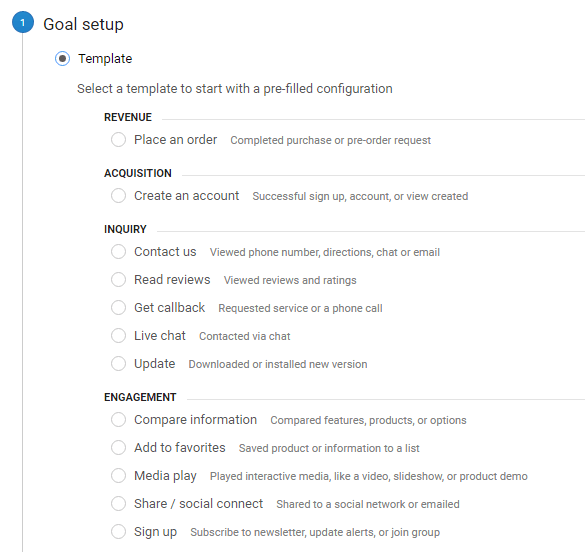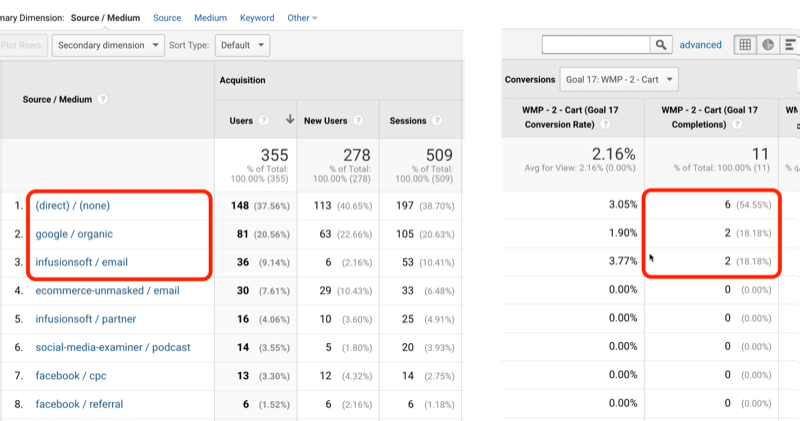Learn What Data Is Google Analytics Goals Unable to Track
Learn What Data Is Google Analytics Goals Unable to Track
Blog Article
Discover the Limitations of Google Analytics Goals: Introducing the Data Types That Remain Untrackable
As companies significantly count on data-driven decision-making, understanding the restrictions of tools like Google Analytics ends up being paramount. While Google Analytics Goals offer beneficial insights into individual communications, there exist information kinds that elude tracking, presenting obstacles to a comprehensive understanding of individual habits.
Insufficient Customer Journey Tracking
Incomplete user journey monitoring within Google Analytics can hinder the ability to properly examine individual behavior. When the user journey is not fully tracked, there are gaps in the data that prevent an extensive understanding of exactly how individuals connect with a website. This absence of insight can result in missed chances for optimization and improvements to the user experience.
One common concern with insufficient individual journey tracking is the inability to see the complete path that users take before completing a goal or leaving the website. Without this details, it is challenging to identify where individuals may be coming across obstacles or friction factors that prevent them from converting. Additionally, insufficient monitoring can obscure the impact of certain advertising efforts or site modifications on individual habits.
To address this restriction, it is essential to establish up appropriate tracking devices within Google Analytics to record the whole individual trip. This may include establishing event tracking, objective funnels, or using devices like Google Tag Supervisor to make sure that no essential communications go unrecorded. By obtaining a detailed view of the customer journey, internet site owners can make even more educated choices to improve user involvement and drive conversions.
Acknowledgment Challenges
Browsing with acknowledgment difficulties in Google Analytics requires a thorough understanding of exactly how various touchpoints contribute to the overall conversion process. Acknowledgment difficulties arise from the intricacy of contemporary client trips, where individuals connect with several networks prior to converting. Google Analytics offers various attribution versions like initial touch, last touch, and straight, each providing a different point of view on just how credit report is assigned to touchpoints along the conversion path. These models may not always precisely mirror the real impact of each touchpoint on the conversion.
One common acknowledgment obstacle is the problem in attributing conversions to the proper resource, especially in instances where users connect with several channels prior to transforming. Additionally, cross-device monitoring presents another attribution obstacle, as individuals frequently switch in between tools during their journey, making it testing to track their communications perfectly.
Offline Conversions
Offered the obstacles related to associating conversions properly in online channels, the dimension of offline conversions offers a significant chance for marketing professionals seeking a much more comprehensive understanding of their clients' trip. Offline conversions refer to activities that consumers take in the real world, such as making purchases in brick-and-mortar shops or over the phone, participating in occasions, or engaging with printed materials - what data is google analytics goals unable to track. These conversions these details are critical for companies that operate both online and offline, as they give valuable insights into the efficiency of marketing campaigns across different touchpoints
Tracking offline conversions generally postured a significant difficulty for marketers, as it was challenging to connect these actions back to certain online interactions precisely. With innovations in innovation, such as the combination of CRM systems, distinct identifiers, and promo code codes, organizations can now bridge the gap in between online and offline information to acquire a much more alternative view of customer actions. By properly determining offline conversions, marketing professionals can enhance their strategies, allocate sources a lot more effectively, and ultimately boost the total client experience.
Cross-Device Monitoring
Cross-device tracking plays a crucial duty in understanding the interconnected nature of customers' digital communications across numerous gadgets. In today's omnichannel world, where customers effortlessly change between smartphones, tablet computers, and desktops, tracking their habits throughout these tools is essential for marketing professionals to gain a detailed view of their customer trip.

Additionally, personal privacy issues and guidelines such as GDPR and CCPA have additionally difficult cross-device tracking. With individuals requiring more control over their information and enhanced limitations on monitoring innovations, online marketers should locate cutting-edge and privacy-compliant means to connect user interactions across devices.
Dynamic Material Involvement
Understanding user engagement with dynamic material is pivotal in enhancing electronic marketing methods for enhanced target market communication. Dynamic web content describes website elements that transform based upon user behavior, choices, or other factors, offering a personalized experience. However, tracking customer interactions with dynamic web content poses obstacles for standard analytics tools like Google Analytics.
While Google Analytics can track basic communications like clicks and page sights, it may battle to catch more nuanced interactions within vibrant web content. what data is google analytics goals look here unable to track. Metrics such as time invested in specific vibrant elements, hover actions, or communications within pop-ups are often not easily measurable utilizing typical tracking approaches. This restriction hinders marketers' ability to completely understand exactly how individuals are engaging with vibrant content and tailor their techniques accordingly

Verdict
In conclusion, Google Analytics objectives have restrictions in tracking insufficient customer journeys, connecting conversions properly, capturing offline conversions, tracking cross-device interactions, and measuring dynamic material interaction. These restraints highlight the importance of exploring additional tracking techniques and devices to obtain an extra comprehensive understanding of user behavior and conversions beyond what Google Analytics can supply.
While Google Analytics Goals deal important understandings right into user interactions, there exist data types that avoid monitoring, presenting challenges to a detailed understanding of individual habits.Incomplete individual journey tracking within Google Analytics can prevent the capacity to properly examine individual behavior. When the customer trip is not completely tracked, there are gaps in the information that stop a thorough understanding of just how customers communicate with an internet site.One typical problem with incomplete customer journey monitoring is the lack of ability to see the complete path that users take before finishing a goal or leaving the website. By obtaining a thorough view of the customer trip, site proprietors can make more educated choices to boost customer engagement and drive conversions.
Report this page